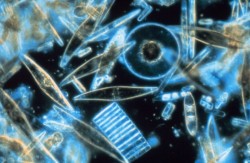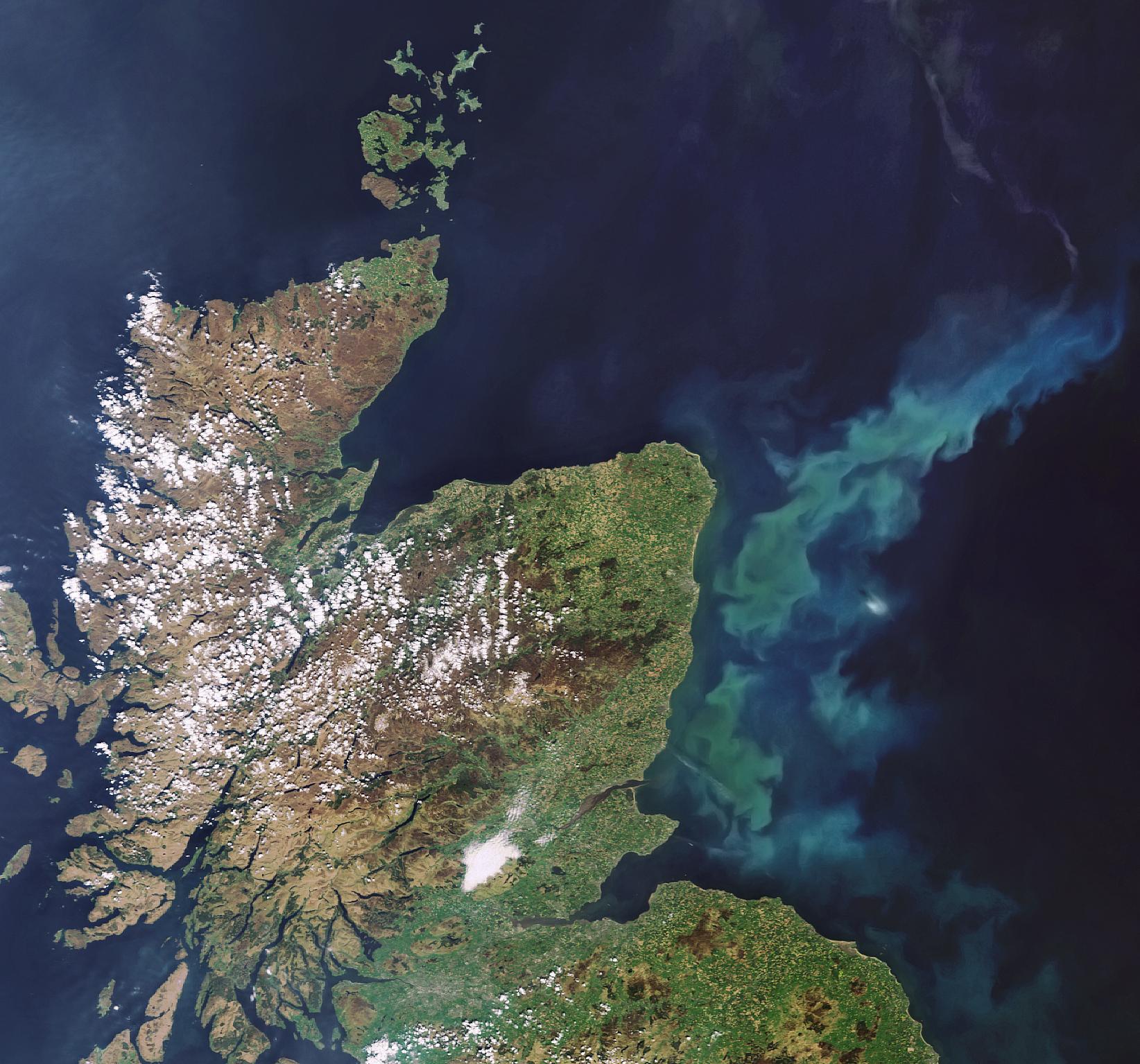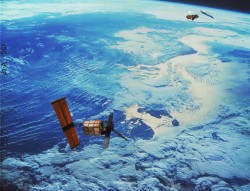Usually the North Sea conjures up cold and gloomy visions. But as the stunning image above shows, this isn’t always the case. ESA’s Envisat captured vast green swirls of phytoplankton bloom drifting in the North Sea currents on May 7th 2008; spring has most definitely sprung for the Scottish waters. But how is this bright green bloom produced? What has stirred up all this activity? It seems that for a short time, the lush green landscape of Fife is matched by the sea-faring plankton off the UK coast…

This vivid green bloom was created by a type of plankton called phytoplankton. The microscopic plant floats near the surface of large bodies of water where sunlight is plentiful. Like any land-based plant, phytoplankton requires photosynthesis to survive. Other types of plankton include zooplankton (microscopic creatures) and bacterioplankton (water-borne bacteria) survive by feeding off other plankton varieties. The plant variety of plankton, phytoplankton, is well known to produce blooms when nutrients on the marine environment increase, boosting phytoplankton population. It would seem that the water off the Scotland coast has become particularly nutrient rich, with plenty of sunlight, creating magnificent displays observable from orbit.
This particular bloom was captured by the Medium Resolution Imaging Spectrometer (MERIS) instrument on board the ESA’s Envisat operating at a full spatial resolution of 300m (i.e. features of 300m can be resolved). The green hue is from the chlorophyll (essential for photosynthesis) contained within each phytoplankton cell. Depending on the phytoplankton species, it’s possible that there are hundreds to thousands of cells per millilitre of sea water.
Phytoplankton is very important when considering the concentrations of carbon dioxide in the atmosphere and their density in the worlds oceans are modelled in simulations of future climate change. During photosynthesis, they absorb carbon dioxide (and generate oxygen), so they form a highly influential carbon sink.
Source: ESA Picture of the Day



What gorgeous scenes! The photography is exquisite, but of course Nature provided the subjects, and they’re magnificent. Seeing photos of such things brings home the reality of life on Earth that few others things can, short of actually overflying those areas in an aircraft or otherwise getting a chance to see it *au naturel*. I wonder what ETs, seeing that bloom in all its glory, would think about it.
What we see here is ‘Nature in the business of staying in business’. That ‘business staying in business’ should sound familiar. Life is appropriating the potential for life in a set of circumstances. When the circumstances radically change, and the local life cannot access them, and when other life can not , either, then we have trouble spelled ‘d, e, a, t, h,’ , and circumstances awaiting further life.
Hi Vanamonde:
Whales feed off smal crustations I believe, like krill. Krill however do eat phytoplankton and zooplankton, so they are an essential part of the foodchain 🙂
Ian
Is this whale food? Or at least food for whale food?
Wonderful ! ! !
We have to observe many things. We should continuaaly watch such pictures.
I think we can see even effects of earth quakes / tsunamis before they hit actually. It may be before few days, months, years , we cold see the effects of such events before they take olace. I have few images, I believe which show the affected areas due to fault activities/ seismic activities in sea, lakes, Deserts, canals or in Rann areas